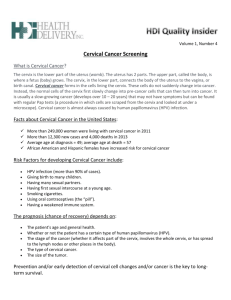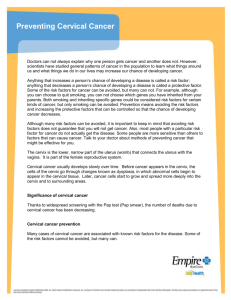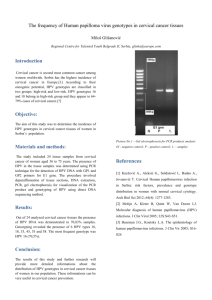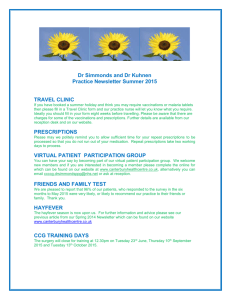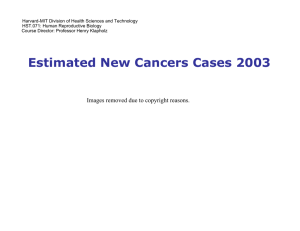Cancer Prevention
advertisement
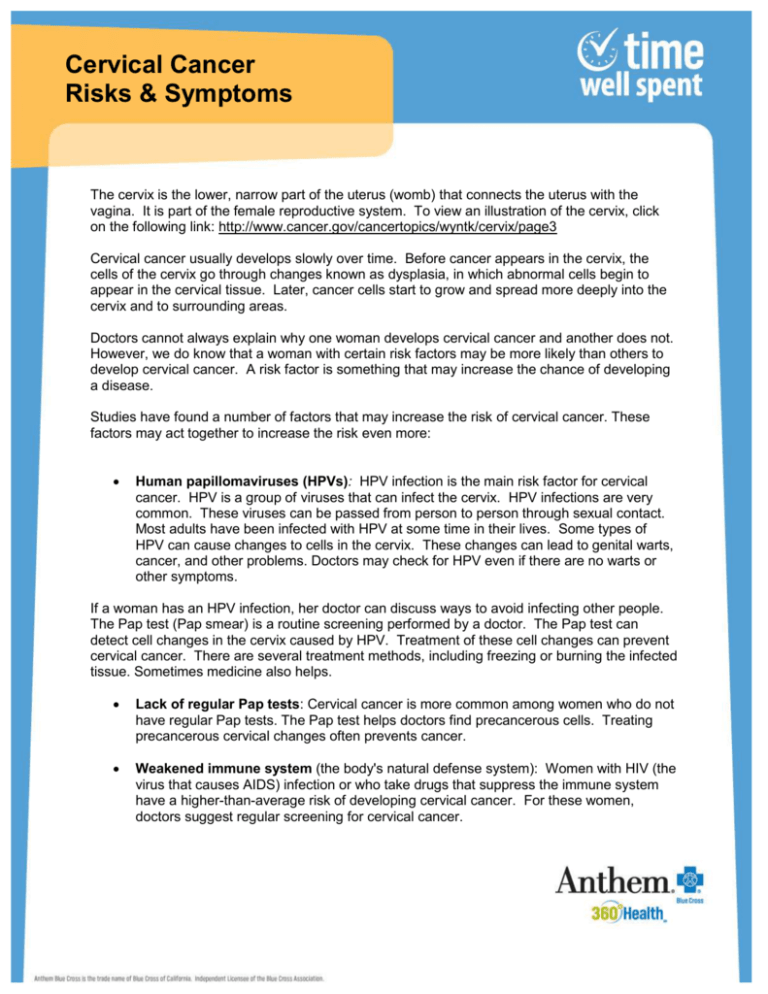
Cervical Cancer Risks & Symptoms The cervix is the lower, narrow part of the uterus (womb) that connects the uterus with the vagina. It is part of the female reproductive system. To view an illustration of the cervix, click on the following link: http://www.cancer.gov/cancertopics/wyntk/cervix/page3 Cervical cancer usually develops slowly over time. Before cancer appears in the cervix, the cells of the cervix go through changes known as dysplasia, in which abnormal cells begin to appear in the cervical tissue. Later, cancer cells start to grow and spread more deeply into the cervix and to surrounding areas. Doctors cannot always explain why one woman develops cervical cancer and another does not. However, we do know that a woman with certain risk factors may be more likely than others to develop cervical cancer. A risk factor is something that may increase the chance of developing a disease. Studies have found a number of factors that may increase the risk of cervical cancer. These factors may act together to increase the risk even more: Human papillomaviruses (HPVs): HPV infection is the main risk factor for cervical cancer. HPV is a group of viruses that can infect the cervix. HPV infections are very common. These viruses can be passed from person to person through sexual contact. Most adults have been infected with HPV at some time in their lives. Some types of HPV can cause changes to cells in the cervix. These changes can lead to genital warts, cancer, and other problems. Doctors may check for HPV even if there are no warts or other symptoms. If a woman has an HPV infection, her doctor can discuss ways to avoid infecting other people. The Pap test (Pap smear) is a routine screening performed by a doctor. The Pap test can detect cell changes in the cervix caused by HPV. Treatment of these cell changes can prevent cervical cancer. There are several treatment methods, including freezing or burning the infected tissue. Sometimes medicine also helps. Lack of regular Pap tests: Cervical cancer is more common among women who do not have regular Pap tests. The Pap test helps doctors find precancerous cells. Treating precancerous cervical changes often prevents cancer. Weakened immune system (the body's natural defense system): Women with HIV (the virus that causes AIDS) infection or who take drugs that suppress the immune system have a higher-than-average risk of developing cervical cancer. For these women, doctors suggest regular screening for cervical cancer. Age: Cancer of the cervix occurs most often in women over the age of 40. Sexual history: Women who have had many sexual partners have a higher-thanaverage risk of developing cervical cancer. Also, a woman who has had sexual intercourse with a man who has had many sexual partners may be at higher risk of developing cervical cancer. In both cases, the risk of developing cervical cancer is higher because these women have a higher-than-average risk of HPV infection. Smoking cigarettes: Women with an HPV infection who smoke cigarettes have a higher risk of cervical cancer than women with HPV infection who do not smoke. Using birth control pills for a long time: Using birth control pills for a long time (5 or more years) may increase the risk of cervical cancer among women with HPV infection. Having many children: Studies suggest that giving birth to many children may increase the risk of cervical cancer among women with HPV infection. Diethylstilbestrol (DES) may increase the risk of a rare form of cervical cancer and certain other cancers of the reproductive system in daughters exposed to this drug before birth. DES was given to some pregnant women in the United States between about 1940 and 1971. (It is no longer given to pregnant women.) Women who think they may be at risk for cancer of the cervix should discuss this concern with their doctor. They may want to ask about a schedule for checkups. Symptoms Precancerous changes and early cancers of the cervix generally do not cause pain or other symptoms. It is important not to wait to feel pain before seeing a doctor. When the disease gets worse, women may notice one or more of these symptoms: Abnormal vaginal bleeding Bleeding that occurs between regular menstrual periods Bleeding after sexual intercourse, douching, or a pelvic exam Menstrual periods that last longer and are heavier than before Bleeding after menopause Increased vaginal discharge Pelvic pain Pain during sexual intercourse Infections or other health problems may also cause these symptoms. Only a doctor can tell for sure. A woman with any of these symptoms should tell her doctor so that problems can be diagnosed and treated as early as possible. For more information on women’s health, visit MyHealth@Anthem at anthem.com/ca. Also visit the following sites: National Cancer Institute - www.cancer.gov American Cancer Society – www.cancer.org Centers for Disease Control and Prevention – www.cdc.gov National Institutes of Health – www.nih.gov ---------------------------------------------------------------------------Source: National Cancer Institute, www.cancer.gov This information is intended for educational purposes only, and should not be interpreted as medical advice. Please consult your physician for advice about changes that may affect your health.



